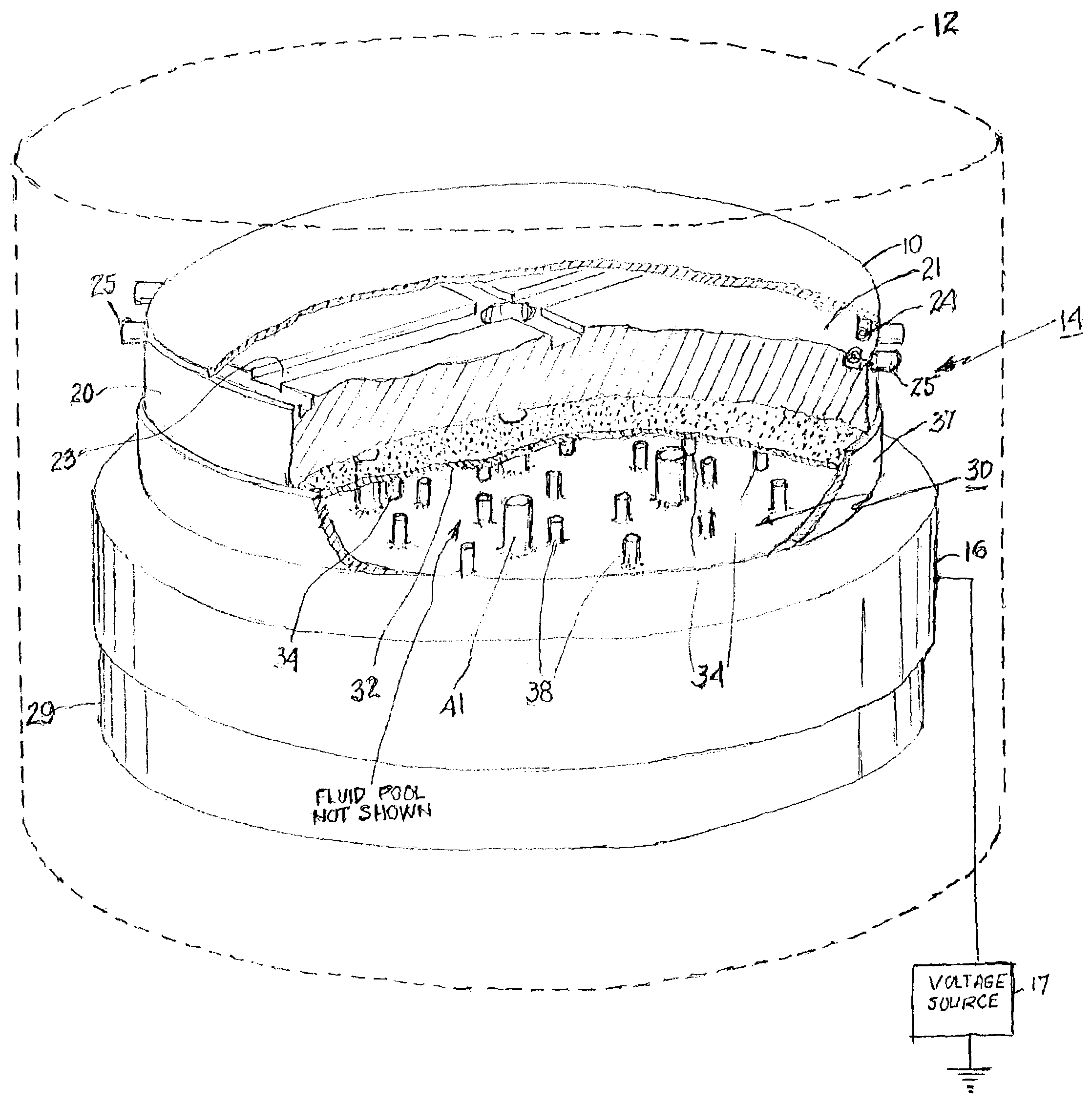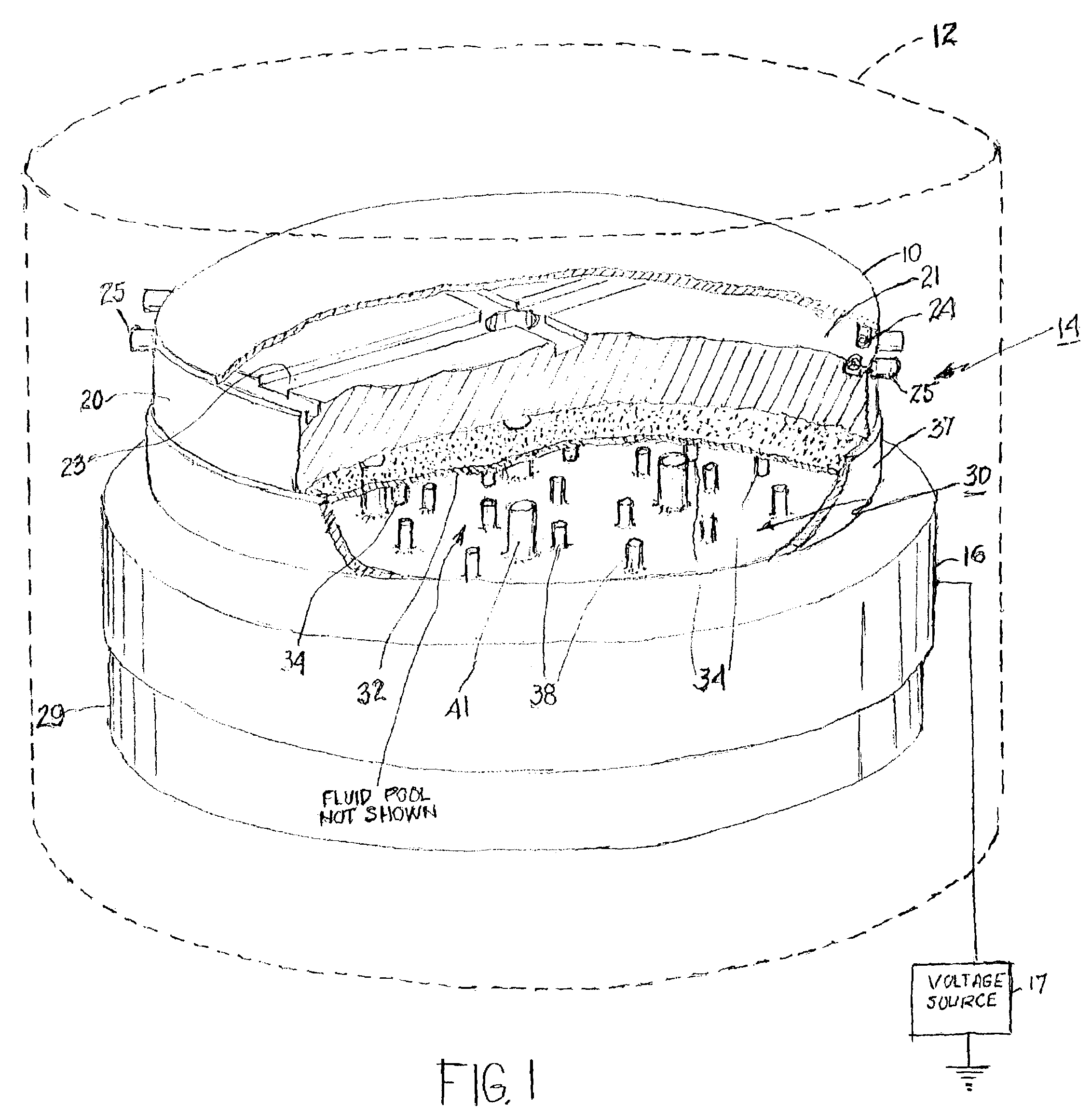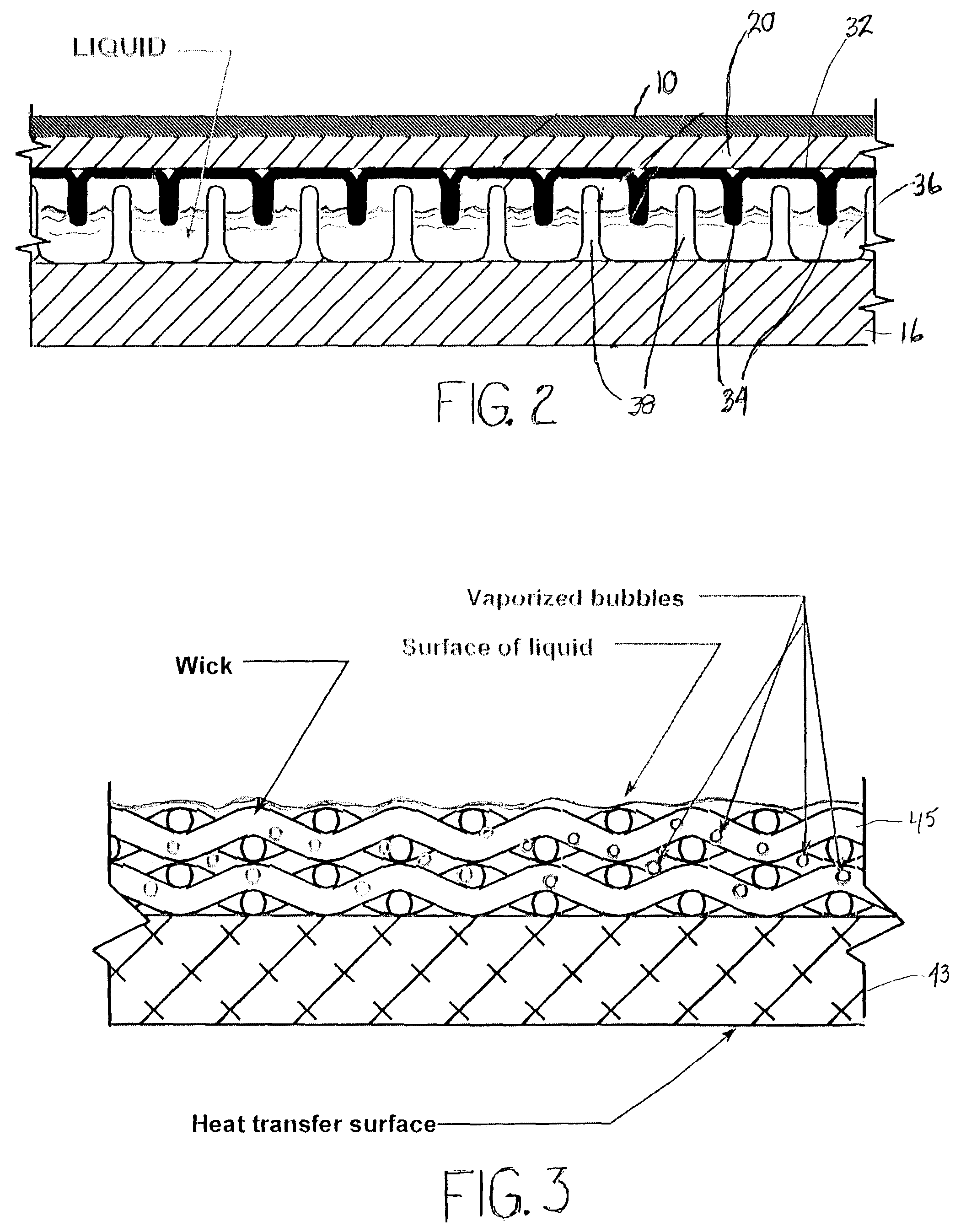Lateral temperature equalizing system for large area surfaces during processing
a technology of surface temperature and lateral heat exchange, which is applied in the direction of coatings, chemical vapor deposition coatings, electric discharge tubes, etc., can solve the problems of inability to easily compensate local and/or lateral temperature variations by such techniques, and the temperature across the surface of the wafer is not uniform, etc., to achieve rapid stabilization of temperature, reduce the effect of lateral heat flow and small changes in the head
- Summary
- Abstract
- Description
- Claims
- Application Information
AI Technical Summary
Benefits of technology
Problems solved by technology
Method used
Image
Examples
Embodiment Construction
[0020]A system in accordance with the invention, referring now to FIG. 1, is compatible with and complementary to electrostatic chuck systems of the type generally described above. While the system may be employed with any size wafer (substrate), it is uniquely adapted to resolving the critical heat distribution problems encountered with the large 300 mm diameter wafers. The example of FIG. 1 depicts a 300 mm semiconductor wafer 10 in a process chamber 12, indicated only by dotted lines, in which a high energy etching step, such as plasma etching, is to be effected. No disclosure of a specific example or details are needed, as to the wafer holding structure, in view of the state of the art. The electrostatic chuck device 14 on which the wafer 10 is precisely mounted comprises a cathode base 16 that is charged in a desired polarity by a voltage source 17, and an uppermost pedestal (also sometimes called a chuck or platen) 20 with a surface 21 having patterned depressions, such as gro...
PUM
| Property | Measurement | Unit |
|---|---|---|
| diameter | aaaaa | aaaaa |
| temperature | aaaaa | aaaaa |
| pressure | aaaaa | aaaaa |
Abstract
Description
Claims
Application Information
 Login to View More
Login to View More - R&D
- Intellectual Property
- Life Sciences
- Materials
- Tech Scout
- Unparalleled Data Quality
- Higher Quality Content
- 60% Fewer Hallucinations
Browse by: Latest US Patents, China's latest patents, Technical Efficacy Thesaurus, Application Domain, Technology Topic, Popular Technical Reports.
© 2025 PatSnap. All rights reserved.Legal|Privacy policy|Modern Slavery Act Transparency Statement|Sitemap|About US| Contact US: help@patsnap.com



